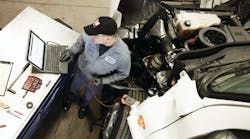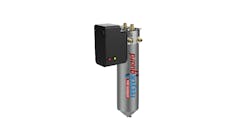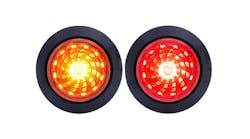There are three selection criteria critical to spec'ing an engine for reduced maintenance and optimal productivity, says Bill Bizjak with W.W. Williams (www.wwwilliams.com), a member of the WheelTime Network (www.wheeltime.com), North America's largest dedicated service and parts network. Those criteria are:
1. Spec based on the job.
Consideration of the type of work you will be doing and the environments in which you will be operating should factor into your selection of equipment, says Bizjak who has more than 30 years in the heavy duty maintenance industry. "Choosing the amount of horsepower and torque needed to get the job done is key.
"Having insufficient power for a job can overload the engine and add unnecessary wear on its components, leading to breakdowns, reduced productivity and poor resale value."
2. Spec based on the team.
No two fleets are exactly alike, notes Bizjak, and drivers have a considerable impact on fuel efficiency and vehicle operations. "With this in mind, it is important to ask for input from your drivers as well as the technicians who work on the equipment and maintenance service providers.
"A thorough understanding of the major issues in your truck's history provides insights for spec'ing new equipment," he continues. "Solving driver issues will increase driver satisfaction, performance and retention."
3. Spec based on service provider experience and technology.
"Today, understanding the expanding role and value of onboard sensors and computers is essential to running your operation," says Bizjak. "Having access to trained and experienced maintenance technicians as well as real-time diagnostic technology can cut days of downtime into only a few minutes."
Since up-to-date diagnostic equipment in shops is today's imperative, WheelTime recommends fleets either obtain the necessary diagnostic tools for all of their equipment or partner with a reputable service provider to guarantee an efficient and effective diagnosis.
For example, one of the most frequent issues seen in WheelTime shops these days is "the dreaded 'check engine' light," he says. "Having quick access to the proper diagnostic tools provides greater detail on the check engine event and offers important context for planning the next steps that may impact drivers, deliveries, fleets and their fleet customers."
To solve this emerging new truck maintenance phenomenon, WheelTime partnered with Cojali (www.cojaliusa.com/en), Europe's largest multi-brand diagnostic tool supplier, to gain access to a new diagnostic system that can diagnose all-makes with one tool. This, says Bizjak, enhances WheelTime's ability to diagnose maintenance issues quickly and get trucks back on the road with the least amount of downtime.




